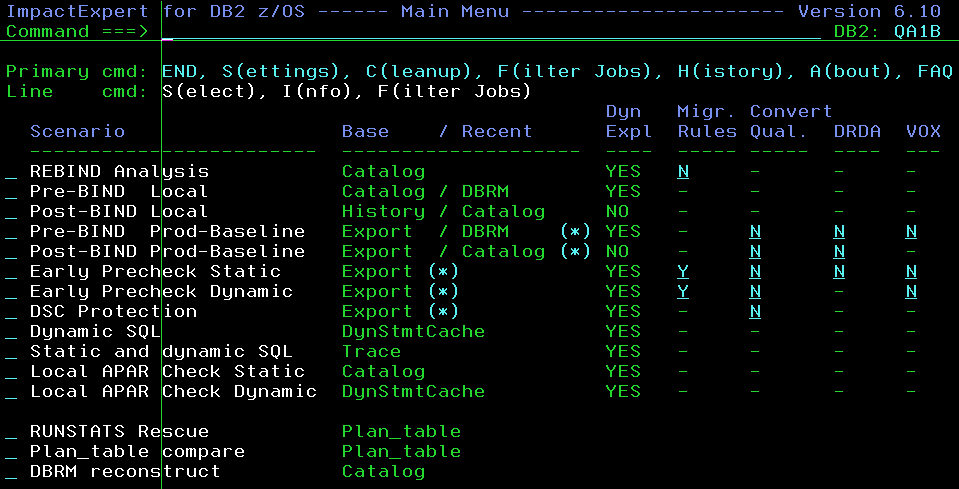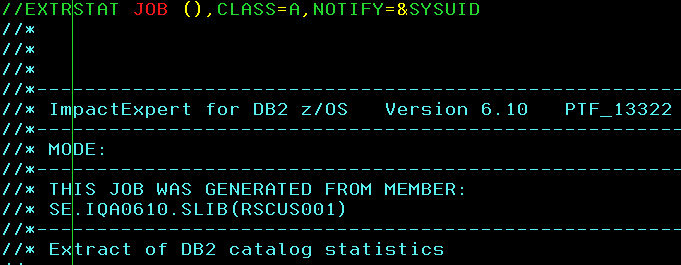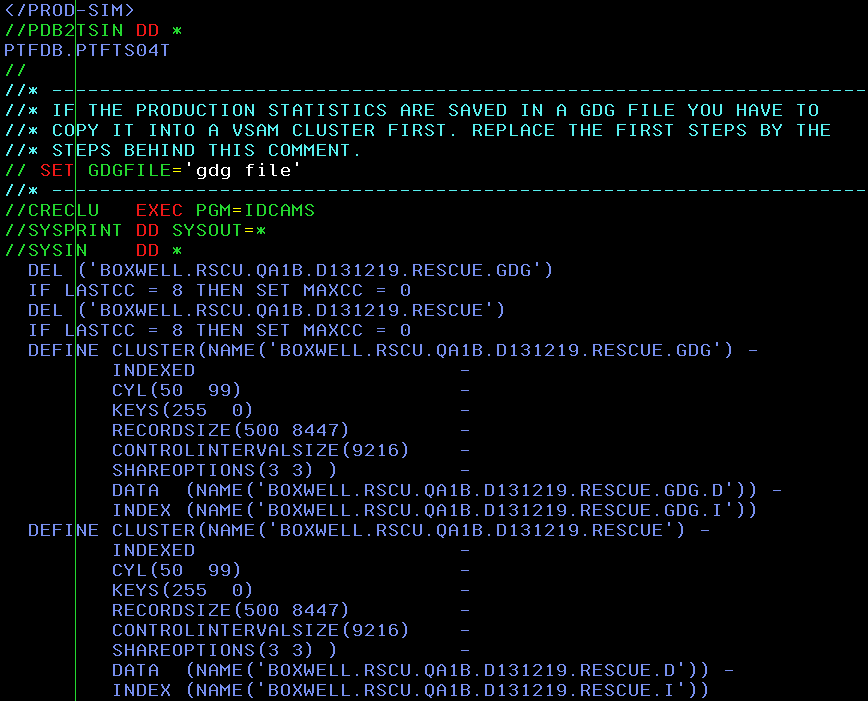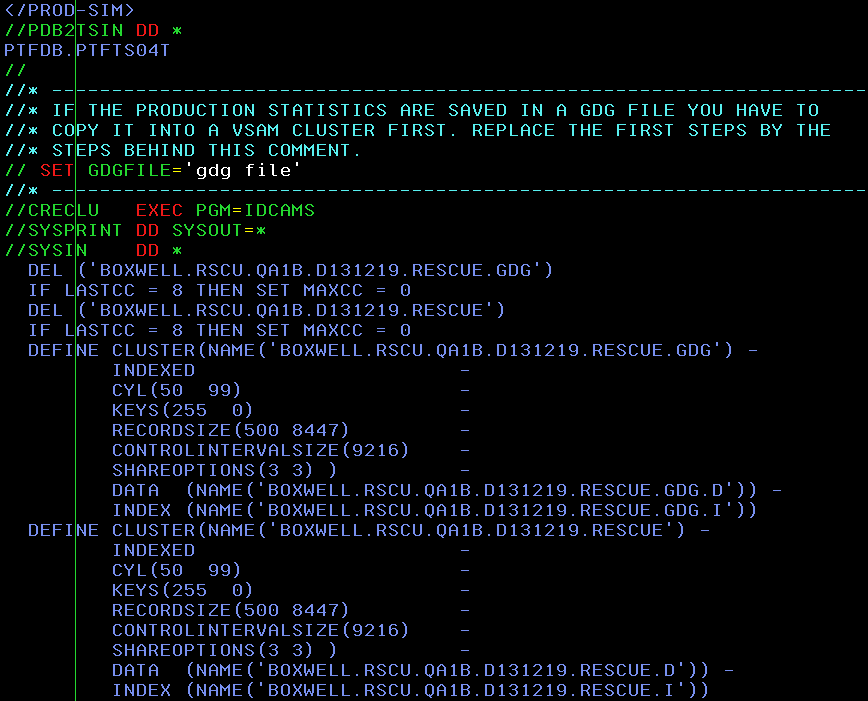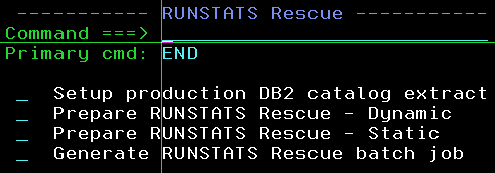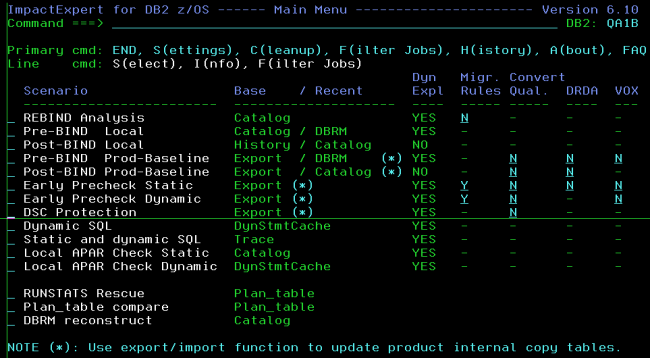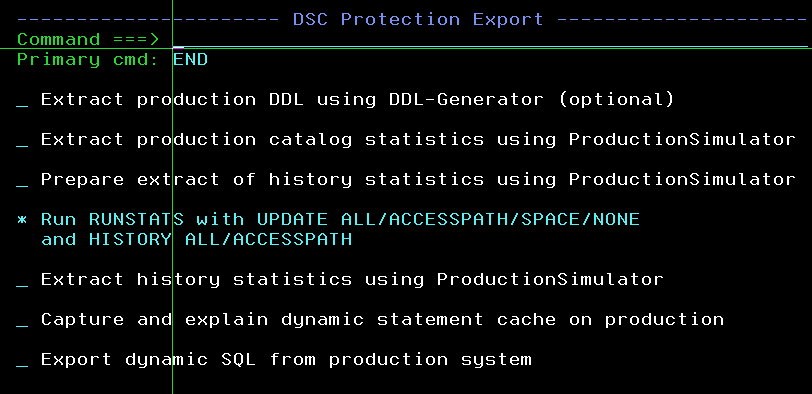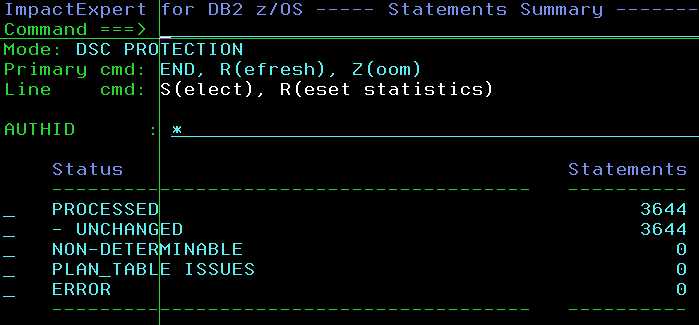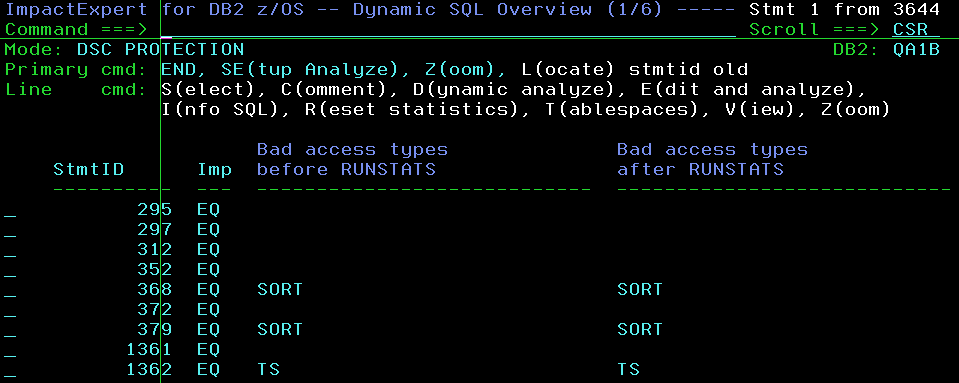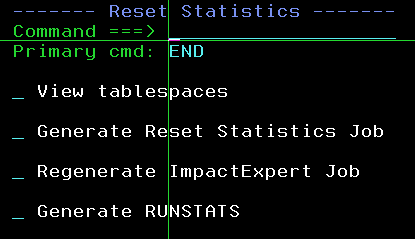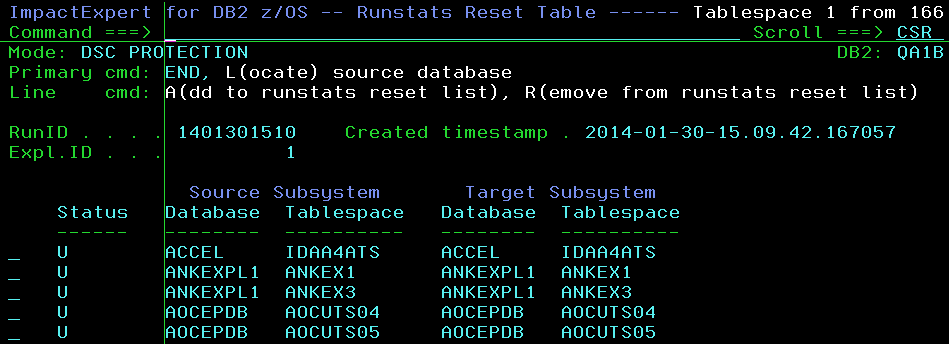This month I have a really nice – and rather long – technical newsletter to sink your teeth into!
The problem: Too low internal PIECE limit in DB2
The solution: Set of SQL queries for my newsletter readers to really find the bad guys
Create DBD diagnose cards
Cut and paste the control cards into some DB2 Utility JCL
o “F OBDINNUM” in the REPAIR job output
Automatic parse the millions of lines of REPAIR output and *only* outputs OBIDs
Whole SQL.txt JCL.txt REXX.txt
Reach your real maximum number of PIECEs!
The Problem: Too low internal PIECE limit in DB2
We start with a little APAR that IBM did way back in 2013:
2013 IBM APAR
PM75150: ALLOW MAXIMUM NUMBER OF PIECES FOR AN NPI OF LARGE TABLE SPACE, INDEPENDENT OF TABLE SPACE MAXIMUM NUMBER OF DATASETS
| Reported release | A10 |
| Status | CLOSED UR1 |
| PE | NoPE |
| HIPER | NoHIPER |
| Special Attention | NoSpecatt |
| Submitted date | 2012-10-16 |
| Closed date | 2013-02-25 |
| Last modified date | 2013-04-02 |
So far, so good. Looks like any run of the mill standard DB2 10 fix of “no real importance”… until you read the “small print” that is!
******************************************************************************************************************
USERS AFFECTED: All DB2 users of Non-Partitioned Index (NPI) on a large table space.
******************************************************************************************************************
PROBLEM DESCRIPTION:
For a large table space, the maximum number of pieces for an NPI is incorrectly inherited from the
maximum number of partitions of the table space. When inserting data to a table or creating the NPI,
the customer may receive the following message,
DSNT501I DMBC DSNKINSL RESOURCE UNAVAILABLE CORRELATION-ID=QFSBTC036
CONNECTION-ID=SERVER LUW-ID= GAF263F9.C741.120818101839=561408
REASON 00C9009D
TYPE 00000201
****************************************************************************************************************
RECOMMENDATION:
****************************************************************************************************************
For an NPI on a LARGE(5-byte RID) table space, the index maximum number of pieces is independent of the table space maximum number of partitions, it is calculated from index page size and piece size as the following:
Maximum NPI number of pieces = MINIMUM( 4096, 2^32 / (index piece size/index page size) )
In other words, DB2 set the internal piece limit way too low!
This is very bad news if you think you have 4,096 pieces but you really have only 256!
Now the APAR carries on with helpful hints and tips (Quoting here from the APAR text):
Top of page
1. run a query, such as the sample query below, to identify the databases, table spaces and indexes,
SELECT TS.DBNAME AS DB_NAME,
TS.NAME AS TS_NAME,
IX.NAME AS INDEX_NAME,
IX.CREATOR AS IX_CREATOR,
HEX(IX.OBID) AS INDEX_OBID,
IX.CLOSERULE AS CLOSERULE
FROM SYSIBM.SYSINDEXES IX,
SYSIBM.SYSTABLES TB,
SYSIBM.SYSTABLESPACE TS
WHERE TB.NAME = IX.TBNAME AND
TB.CREATOR = IX.TBCREATOR AND
TB.TSNAME = TS.NAME AND
TB.DBNAME = TS.DBNAME AND
(TS.PARTITIONS > 254 OR
TS.TYPE = 'L' OR
TS.TYPE = 'K' OR
TS.DSSIZE > 0) AND
TS.PARTITIONS <> 0 AND
(TS.STATUS = 'C' OR
NOT ((IX.INDEXTYPE = 'P' OR
IX.INDEXTYPE = 'D') AND
TB.PARTKEYCOLNUM <>0)) AND
TS.DBNAME <> 'DSNDB06'
ORDER BY IX.OBID;+-------------------------------------------------------------+
|DB_NAME |TS_NAME |INDEX_NAME|IX_CREATOR|INDEX_OBID|CLOSERULE |
+-------------------------------------------------------------+
|DB161410|XTB10000|I_NODEIDXT|SC161410 |0056 |N |
|DB161410|TU161410|I_DOCIDTB1|SC161410 |0058 |N |
...
2. run REPAIR DBD DIAGNOSE against all databases from the above query.
For example REPAIR DBD DB161410. By searching OBDINNUM in the REPAIR DBD output, it has the following mismatch,
DSNU916I DSNUEDFT - OBDS DIFFER AT OFFSET X'00000052'
OBDINNUM - INFORMATION NOT IN DB2 CATALOG
DSNU904I DSNUEDFT - EXISTING VALUE X'0100'
DSNU905I DSNUEDFT - REBUILT VALUE X'1000'
DSNU913I DSNUEDDR - OBD X'0056' COMPARISON COMPLETE -- 0 ERRORS
which confirms the index index I_NODEIDXT with OBID X'0056' has incorrect maximum number of index pieces.
3. fix these indexes found in the above repair DBD output by altering the CLOSE attribute of the identified indexes from their current value and then altering the CLOSE attribute back to their original value. The index name and index attribute information can be found in the query result at step 1.
for example, the index SC161410.I_NODEIDXT has the CLOSE attribute CLOSERULE = N. To correct the maximum number of index pieces for I_NODEIDXT, run the following DDL
ALTER INDEX index SC161410.I_NODEIDXT CLOSE YES
ALTER INDEX index SC161410.I_NODEIDXT CLOSE NO
So what I decided to do, was to create a set of queries for my newsletter readers to make this process a tad easier to really find the bad guys!
Top of page
The solution: Set of SQL queries for my newsletter readers to really find the bad guys
Whole SQL.txt JCL.txt REXX.txt
Create DBD diagnose cards
First step is nearly the same SQL as in 1. Above:
-- CREATE DBD DIAGNOSE CARDS FOR ANY DATABASES THAT ARE CANDIDATES
SELECT DISTINCT SUBSTR(' REPAIR OBJECT LOG YES DBD DIAGNOSE DATABASE '
CONCAT STRIP(TS.DBNAME) , 1 , 54 )
FROM SYSIBM.SYSINDEXES IX,
SYSIBM.SYSTABLES TB,
SYSIBM.SYSTABLESPACE TS
WHERE TB.NAME = IX.TBNAME
AND TB.CREATOR = IX.TBCREATOR
AND TB.TSNAME = TS.NAME
AND TB.DBNAME = TS.DBNAME
AND (TS.PARTITIONS > 254
OR TS.TYPE = 'L'
OR TS.TYPE = 'K'
OR TS.DSSIZE > 0)
AND TS.PARTITIONS <> 0
AND (TS.STATUS = 'C'
OR NOT ((IX.INDEXTYPE = 'P'
OR IX.INDEXTYPE = 'D')
AND TB.PARTKEYCOLNUM <> 0))
AND TS.DBNAME <> 'DSNDB06'
;It returns this style of output (If you have *no* output then congratulations you have *no* problem!):
REPAIR OBJECT LOG YES DBD DIAGNOSE DATABASE A140XO82
REPAIR OBJECT LOG YES DBD DIAGNOSE DATABASE ANKDB1
REPAIR OBJECT LOG YES DBD DIAGNOSE DATABASE ANKDB3
.
.
.
Top of page
Cut and paste these control cards into some DB2 Utility JCL
Now you must cut and paste these control cards into some DB2 Utility JCL and get them all run.
The next query lists out all the index data you need from the above databases:
-- NOW LIST INDEX OBID'S ON THE ABOVE DATABASES THAT MUST BE SEARCHED
-- FOR IN THE REPAIR SYSOUT BY USING "F OBDINNUM" AND CHECKING IF THE
-- OBID'S MATCH
SELECT SUBSTR(TS.DBNAME , 1 , 8) AS DB_NAME,
HEX(IX.OBID) AS INDEX_OBID,
SUBSTR(STRIP(IX.CREATOR) CONCAT '.' CONCAT
STRIP(IX.NAME) , 1 , 71) AS INDEX
FROM SYSIBM.SYSINDEXES IX,
SYSIBM.SYSTABLES TB,
SYSIBM.SYSTABLESPACE TS
WHERE TB.NAME = IX.TBNAME
AND TB.CREATOR = IX.TBCREATOR
AND TB.TSNAME = TS.NAME
AND TB.DBNAME = TS.DBNAME
AND (TS.PARTITIONS > 254
OR TS.TYPE = 'L'
OR TS.TYPE = 'K'
OR TS.DSSIZE > 0)
AND TS.PARTITIONS <> 0
AND (TS.STATUS = 'C'
OR NOT ((IX.INDEXTYPE = 'P'
OR IX.INDEXTYPE = 'D')
AND TB.PARTKEYCOLNUM <> 0))
AND TS.DBNAME <> 'DSNDB06'
ORDER BY 1 , 2
;
The output looks like:
---------+---------+---------+---------+----------
DB_NAME INDEX_OBID INDEX
---------+---------+---------+---------+---------
A140XO82 000C USER001.RESB~0
ANKDB1 000A ANKDB1.ANKIX11
ANKDB3 0008 ANKDB3.ANKIX3 . . .
Do “F OBDINNUM” in the REPAIR job output
Now comes the really horrible bit – you must now do “F OBDINNUM” in the REPAIR job output and see if you have any matches for the above indexes in the relevant database. Again, if you have none then congratulations, you have no problem!
If you find data like this (just as in the IBM APAR description):
DSNU916I DSNUEDFT - OBDS DIFFER AT OFFSET X'00000052'
OBDINNUM - INFORMATION NOT IN DB2 CATALOG
DSNU904I DSNUEDFT - EXISTING VALUE X'0100'
DSNU905I DSNUEDFT - REBUILT VALUE X'1000'
DSNU913I DSNUEDDR - OBD X'0056' COMPARISON COMPLETE -- 0 ERRORS
Top of page
then you must now do the next step to generate the corrective ALTER flip-flops:
-- CREATE DRIVER TABLE FOR CARTESIAN JOIN PROCESSING
DECLARE GLOBAL TEMPORARY TABLE DRIVER (NUMBER SMALLINT) ;
INSERT INTO SESSION.DRIVER VALUES 1 ;
INSERT INTO SESSION.DRIVER VALUES 2 ;
INSERT INTO SESSION.DRIVER VALUES 3 ;
INSERT INTO SESSION.DRIVER VALUES 4 ;
INSERT INTO SESSION.DRIVER VALUES 5 ;
INSERT INTO SESSION.DRIVER VALUES 6 ;
-- NOW GENERATE CORRECTIVE CLOSE FLIPS ONE FOR NO -> YES
-- AND ONE FOR YES -> NO
-- NO -> YES CLOSERULE FLIP CONTROL CARDS
WITH T1 ( IXNAME
, DBNAME
, OBID)
AS ( SELECT STRIP(IX.CREATOR) CONCAT '.' CONCAT STRIP(IX.NAME)
, TS.DBNAME
, IX.OBID
FROM SYSIBM.SYSINDEXES IX,
SYSIBM.SYSTABLES TB,
SYSIBM.SYSTABLESPACE TS
WHERE TB.NAME = IX.TBNAME
AND TB.CREATOR = IX.TBCREATOR
AND TB.TSNAME = TS.NAME
AND TB.DBNAME = TS.DBNAME
AND (TS.PARTITIONS > 254
OR TS.TYPE = 'L'
OR TS.TYPE = 'K'
OR TS.DSSIZE > 0)
AND TS.PARTITIONS <> 0
AND (TS.STATUS = 'C'
OR NOT ((IX.INDEXTYPE = 'P'
OR IX.INDEXTYPE = 'D')
AND TB.PARTKEYCOLNUM <> 0))
AND TS.DBNAME <> 'DSNDB06'
AND IX.CLOSERULE = 'N'
ORDER BY TS.DBNAME , HEX(IX.OBID)
)
SELECT CAST(CASE NUMBER
WHEN 1 THEN 'ALTER INDEX'
WHEN 2 THEN IXNAME
WHEN 3 THEN 'CLOSE YES $'
WHEN 4 THEN 'ALTER INDEX'
WHEN 5 THEN IXNAME
WHEN 6 THEN 'CLOSE NO $'
END AS CHAR(72))
FROM T1, SESSION.DRIVER
ORDER BY DBNAME, OBID, NUMBER
;
Which generates the first set of flip-flops from YES -> NO:
ALTER INDEX
D9999TOP.BADBIGIX
CLOSE YES $
ALTER INDEX
D9999TOP.BADBIGIX
CLOSE NO $
ALTER INDEX
D9999TOP.BADBIGIB
CLOSE YES $
ALTER INDEX
D9999TOP.BADBIGIB
CLOSE NO $
And then the next flip-flop:
-- CREATE DRIVER TABLE FOR CARTESIAN JOIN PROCESSING
DECLARE GLOBAL TEMPORARY TABLE DRIVER (NUMBER SMALLINT) ;
INSERT INTO SESSION.DRIVER VALUES 1 ;
INSERT INTO SESSION.DRIVER VALUES 2 ;
INSERT INTO SESSION.DRIVER VALUES 3 ;
INSERT INTO SESSION.DRIVER VALUES 4 ;
INSERT INTO SESSION.DRIVER VALUES 5 ;
INSERT INTO SESSION.DRIVER VALUES 6 ;
-- YES -> NO CLOSERULE FLIP CONTROL CARDS
WITH T1 ( IXNAME
, DBNAME
, OBID)
AS ( SELECT STRIP(IX.CREATOR) CONCAT '.' CONCAT STRIP(IX.NAME)
, TS.DBNAME
, IX.OBID
FROM SYSIBM.SYSINDEXES IX,
SYSIBM.SYSTABLES TB,
SYSIBM.SYSTABLESPACE TS
WHERE TB.NAME = IX.TBNAME
AND TB.CREATOR = IX.TBCREATOR
AND TB.TSNAME = TS.NAME
AND TB.DBNAME = TS.DBNAME
AND (TS.PARTITIONS > 254
OR TS.TYPE = 'L'
OR TS.TYPE = 'K'
OR TS.DSSIZE > 0)
AND TS.PARTITIONS <> 0
AND (TS.STATUS = 'C'
OR NOT ((IX.INDEXTYPE = 'P'
OR IX.INDEXTYPE = 'D')
AND TB.PARTKEYCOLNUM <> 0))
AND TS.DBNAME <> 'DSNDB06'
AND IX.CLOSERULE = 'Y'
ORDER BY TS.DBNAME , HEX(IX.OBID)
)
SELECT CAST(CASE NUMBER
WHEN 1 THEN 'ALTER INDEX'
WHEN 2 THEN IXNAME
WHEN 3 THEN 'CLOSE NO $'
WHEN 4 THEN 'ALTER INDEX'
WHEN 5 THEN IXNAME
WHEN 6 THEN 'CLOSE YES $'
END AS CHAR(72))
FROM T1, SESSION.DRIVER
ORDER BY DBNAME, OBID, NUMBER
;
Which generates NO -> YES format:
ALTER INDEX
USER001.RESB~0
CLOSE NO $
ALTER INDEX
USER001.RESB~0
CLOSE YES $
Top of page
Note that the above ALTERs use a $ as terminator, so you must either use a C ALL $ ; style ISPF command or just use a –#SET TERMINATOR $ line in the SPUFI.
Automatic parse of the millions of lines of REPAIR output and *only* outputs OBIDs
At this point, when even I had a HUGE list of candidates, I decided to automate it even further so I wrote a little REXX that parses the millions of lines of REPAIR output and *only* outputs OBIDs for real bad guys. That way you can see what you really have to do very quickly. Here’s how my output looks:
Began checking at: 2014-02-11-12.34.08.752641
Database A140XO82 started.
Database A140XO82 ended.
Database ANKDB1 started.
Database ANKDB1 ended.
Database ANKDB3 started.
Database ANKDB3 ended.
Database D9999TOP started.
OBID X'0004' is X'0100' rebuilt X'1000'
OBID X'0006' is X'0100' rebuilt X'1000'
OBID X'0008' is X'0100' rebuilt X'1000'
OBID X'000A' is X'0100' rebuilt X'1000'
OBID X'000C' is X'0100' rebuilt X'1000'
OBID X'000E' is X'0100' rebuilt X'1000'
OBID X'0010' is X'0100' rebuilt X'1000'
Database D9999TOP ended.
Database DATAPBG2 started.
Database DATAPBG2 ended.
.
.
.
Here you can see that my first actual problem database is the D9999TOP. When I then plug that into my flip flop generator by using cut-and-paste, for both cases, like this:
AND TB.DBNAME = 'D9999TOP'
AND HEX(IX.OBID) IN (
'0004'
, '0006'
, '0008'
, '000A'
, '000C'
, '000E'
, '0010'
)
I get the following output:
ALTER INDEX
D9999TOP.BADBIGIA
CLOSE YES $
ALTER INDEX
D9999TOP.BADBIGIA
CLOSE NO $
ALTER INDEX
D9999TOP.BADBIGIB
CLOSE YES $
ALTER INDEX
D9999TOP.BADBIGIB
CLOSE NO $
ALTER INDEX
D9999TOP.BADBIGIC
CLOSE YES $
ALTER INDEX
D9999TOP.BADBIGIC
CLOSE NO $
ALTER INDEX
D9999TOP.BADBIGID
CLOSE YES $
ALTER INDEX
D9999TOP.BADBIGID
CLOSE NO $
ALTER INDEX
D9999TOP.BADBIGIE
CLOSE YES $
ALTER INDEX
D9999TOP.BADBIGIE
CLOSE NO $
ALTER INDEX
D9999TOP.BADBIGIF
CLOSE YES $
ALTER INDEX
D9999TOP.BADBIGIF
CLOSE NO $
ALTER INDEX
D9999TOP.BADBIGIG
CLOSE YES $
ALTER INDEX
D9999TOP.BADBIGIG
CLOSE NO $
Top of page
Reach your real maximum number of pieces!
There was no output from the other query, so once these ALTERs ran my work on this database was done and I could happily move onto the next.
This is much quicker than searching through REPAIR sysout! The REXX should be copied to a PROC library and called NPI. Then using the JCL (which must tailored for your site, of course!) to execute it – and Bob’s your uncle!
Once all of the ALTERs have been executed then, finally, all of your NPIs can actually reach their real maximum number of pieces!
This month I also used (stole!) the neat Cartesian Join idea from Marcus Davage’s blog: http://spufidoo.wordpress.com/2013/02/28/judicious-cartesian-joins/
that was posted on Listserv and everyone loved it instantly!
As usual any questions or comments are welcome,
TTFN Roy Boxwell
Senior Software Architect


